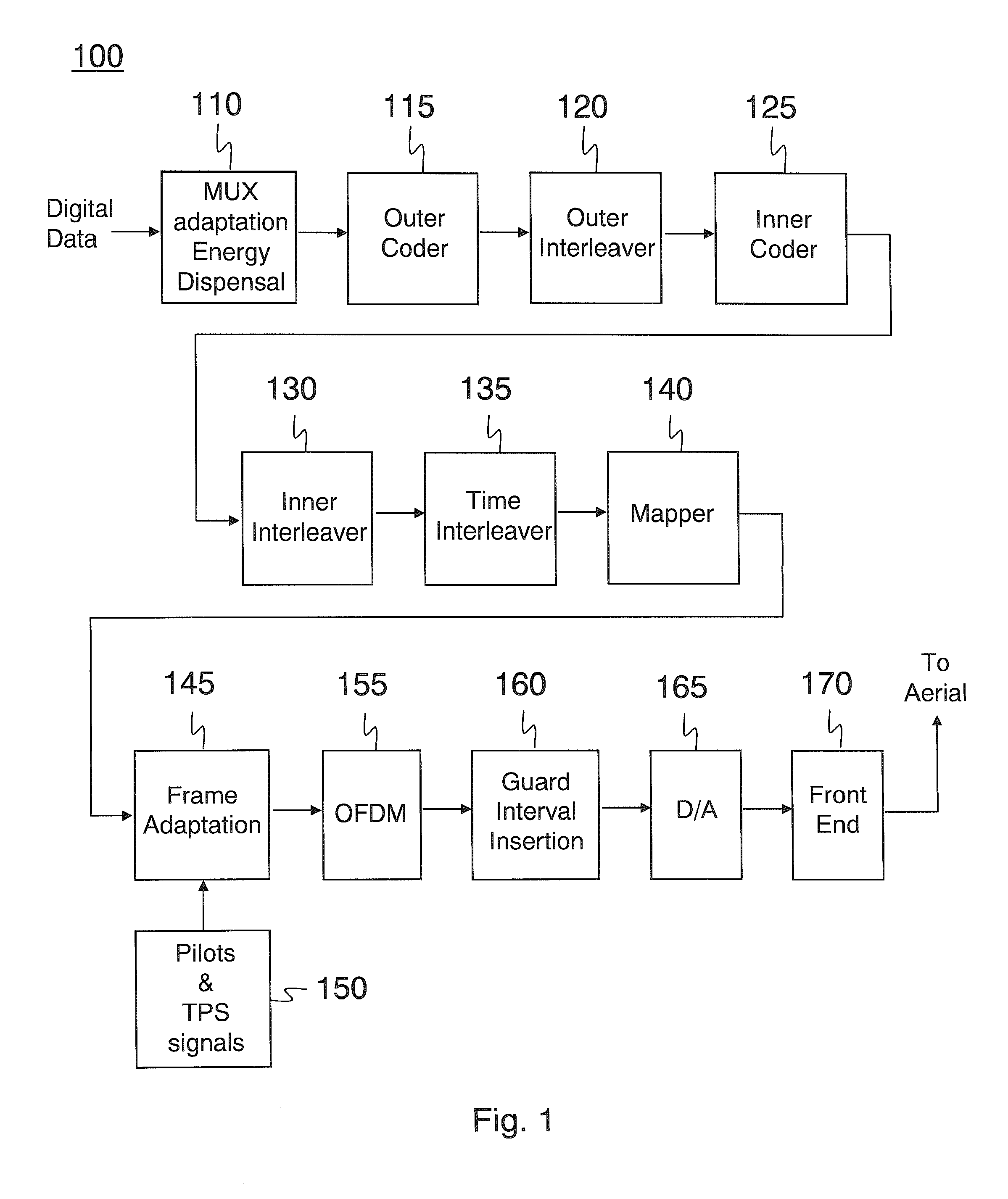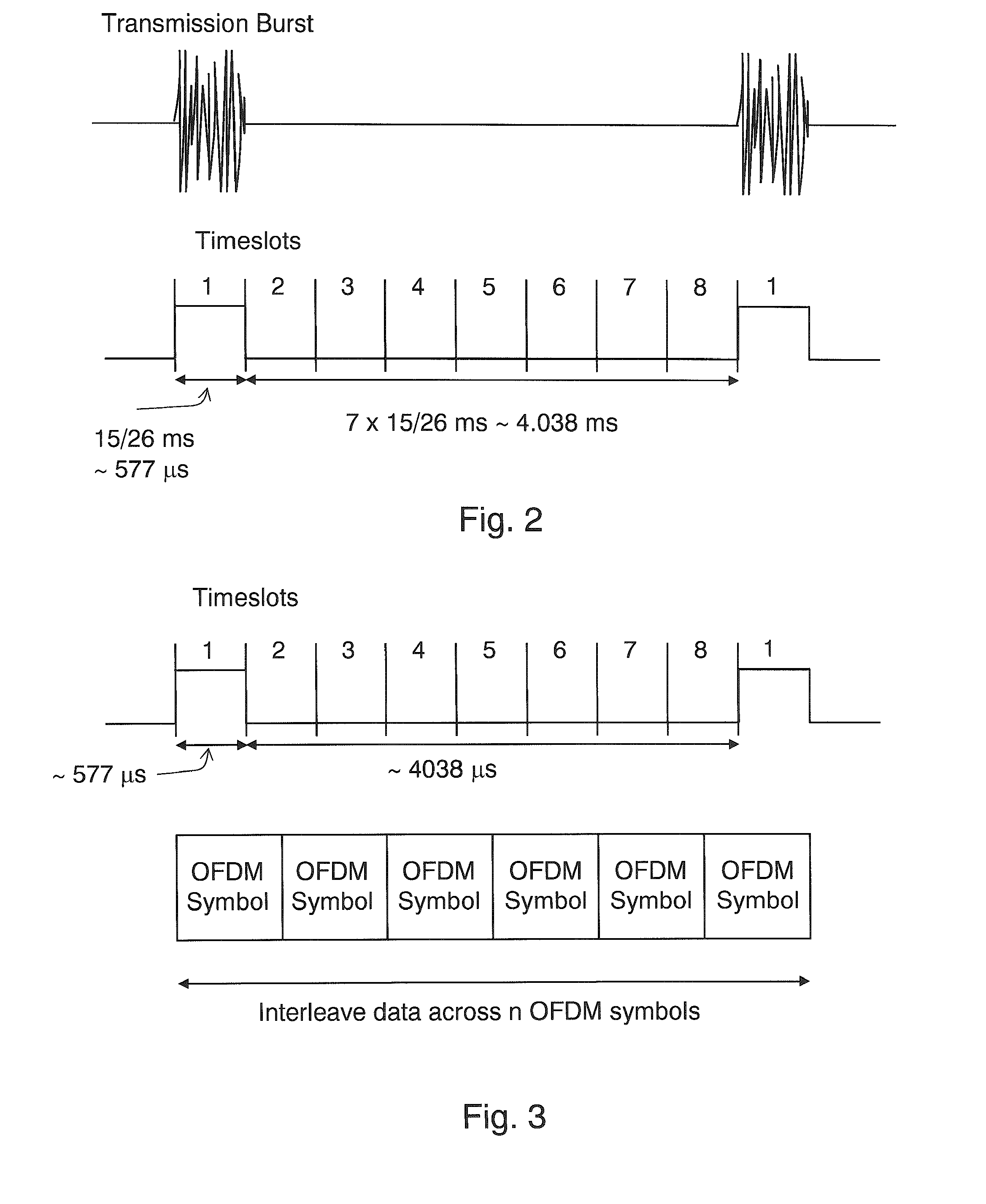Interoperability of digital broadcasting and cellular communication systems
a technology of cellular communication and broadcasting, applied in the field of interoperability of digital broadband broadcasting and cellular communication systems, can solve the problems of interference to the first service, frequency allocation problems, and frequency bands supported by the services may be close to each other, so as to improve the interoperability of gsm voice calls and reduce the interfering
- Summary
- Abstract
- Description
- Claims
- Application Information
AI Technical Summary
Benefits of technology
Problems solved by technology
Method used
Image
Examples
Embodiment Construction
[0050]In the following description the DVB-H system is used as an example of a digital broadband broadcast system, and the GSM system is used as an example of a cellular communication system. DVB-H (and DVB-T) systems are orthogonal frequency division multiplexing (OFDM) based multicarrier modulation systems currently defined in the standards specification ETSI EN 300 744.
[0051]Examples of other applicable digital broadband broadcast systems include, inter alia, the following: Digital Video Broadcast-Terrestrial (DVB-T), Integrated Services Digital Broadcasting-Terrestrial (ISDB-T); 1seg, Digital Multimedia Broadcast-Terrestrial / Handheld (DMB-T / H), Terrestrial Digital Multimedia Broadcasting (T-DMB), Digital Audio Broadcasting (DAB), Digital Radio Mondiale (DRM), Forward Link Only (FLO), MediaFLO, Multimedia Broadcast Multicast Service (MBMS) of 3rd generation partnership project (3GPP), Broadcast and Multicast Services (BCMCS) of 3rd generation partnership project 2 (3GPP2), and da...
PUM
 Login to View More
Login to View More Abstract
Description
Claims
Application Information
 Login to View More
Login to View More - R&D
- Intellectual Property
- Life Sciences
- Materials
- Tech Scout
- Unparalleled Data Quality
- Higher Quality Content
- 60% Fewer Hallucinations
Browse by: Latest US Patents, China's latest patents, Technical Efficacy Thesaurus, Application Domain, Technology Topic, Popular Technical Reports.
© 2025 PatSnap. All rights reserved.Legal|Privacy policy|Modern Slavery Act Transparency Statement|Sitemap|About US| Contact US: help@patsnap.com



